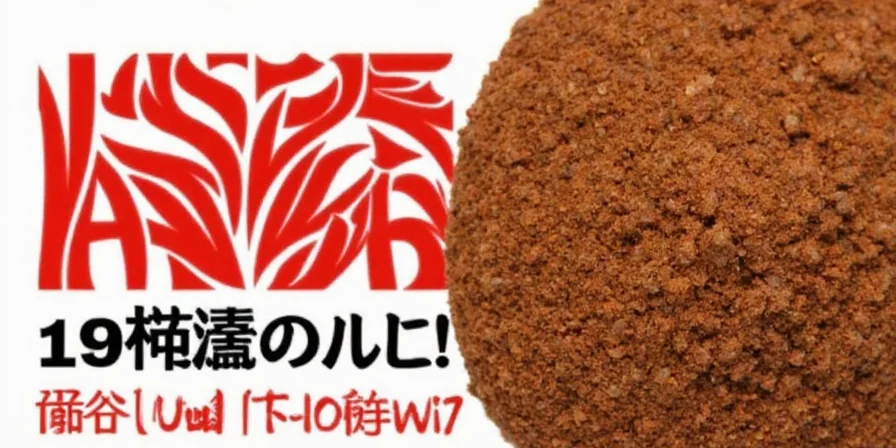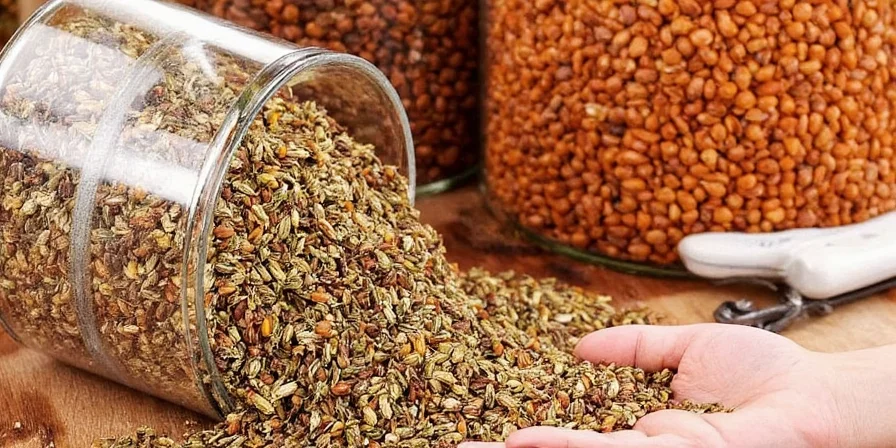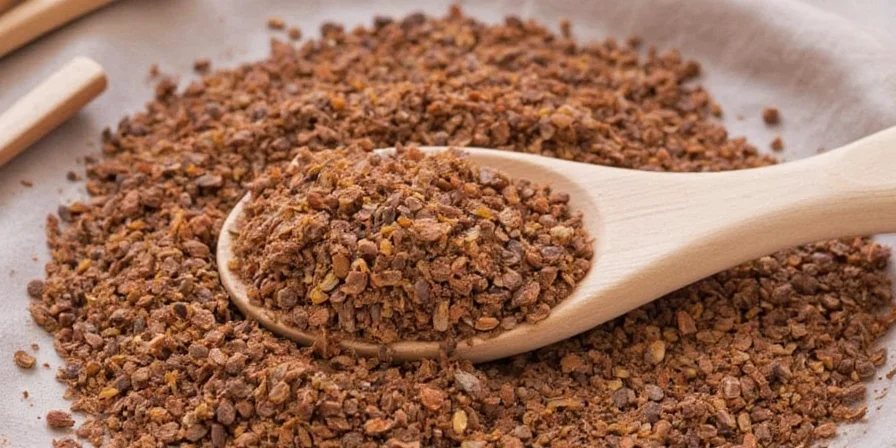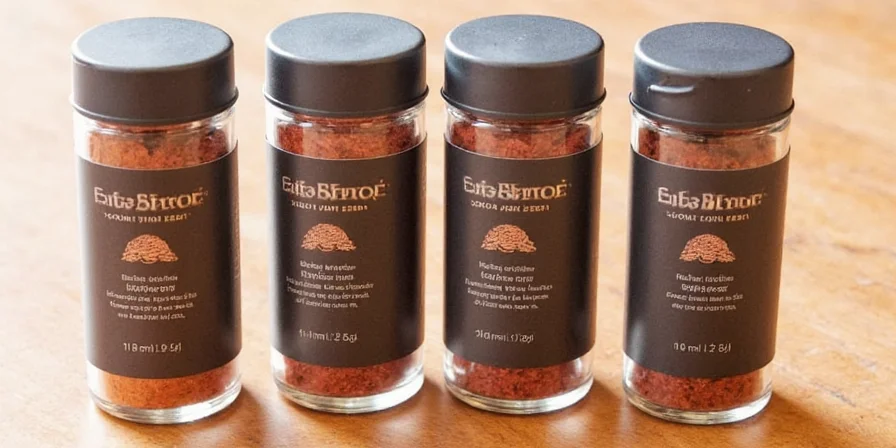Mace spice is the delicate red aril (lacy covering) surrounding the nutmeg seed, carefully dried to create aromatic spice blades with a bright, citrusy flavor profile distinct from nutmeg. Unlike its more famous cousin, mace offers subtle floral notes and peppery accents that enhance dishes without overwhelming them—making it ideal for delicate sauces, light desserts, and plant-based cooking where complexity without heaviness is essential.
Professional chefs consistently choose mace over nutmeg for specific applications due to its unique chemical composition (higher myristicin and elemicin concentrations), which creates brighter notes that complement dairy and citrus better than nutmeg's earthier profile. This guide delivers precise culinary knowledge to maximize mace's potential in your cooking immediately.
Table of Contents
- What Is Mace Spice? Definition & Origins
- Mace Flavor Profile: What Does Mace Taste Like? (Compared to Nutmeg)
- Top 5 Practical Uses of Mace in Everyday Cooking
- Mace vs Nutmeg: Key Differences Chefs Actually Use
- Proven Buying, Storing & Usage Tips for Maximum Flavor
- Historical Significance: Why Mace Was More Valuable Than Gold
- 5 Quick Mace Recipes You Can Make Tonight
- Frequently Asked Questions About Mace Spice
- Why Mace Deserves a Permanent Spot in Your Spice Rack
What Is Mace Spice? Definition & Origins
Mace is derived from the vibrant red aril—the lacy membrane covering the nutmeg seed. After harvesting Myristica fragrans fruit, processors carefully remove this delicate covering and dry it until it transforms into brittle "blades" ranging from orange to reddish-brown.

Despite sharing the same fruit source as nutmeg, mace contains different volatile compounds that create its signature bright, complex warmth with citrus top notes. This chemical distinction makes mace particularly valuable in applications where nutmeg would be too overpowering—such as béchamel sauces, custards, and clear broths.
Mace Flavor Profile: What Does Mace Taste Like? (Compared to Nutmeg)
Mace delivers a sophisticated warmth with distinct citrusy top notes and floral undertones, often described as nutmeg's more refined counterpart. Unlike nutmeg's earthy intensity, mace provides brightness that enhances without dominating—making it ideal for dishes requiring subtle complexity.

Chef-tested insight: Mace's volatile oils release quickly during cooking, so timing matters. Add whole blades early in liquid-based dishes for infused warmth, or sprinkle ground mace in the last 5 minutes for aromatic finish. This precise control creates flavor dimensions impossible with nutmeg alone.
Mace vs Nutmeg: Key Differences Chefs Actually Use
Understanding their chemical and culinary differences unlocks strategic applications beyond simple substitution. This comparison reveals when to choose each spice for optimal results:
| Feature | Mace | Nutmeg |
|---|---|---|
| Origin | Aril (lacy covering) of nutmeg seed | The actual seed inside the aril |
| Flavor Chemistry | Higher myristicin & elemicin (brighter, floral notes) | Higher terpenes (earthier, oilier profile) |
| Best Culinary Application | Delicate sauces, light desserts, clear broths, plant-based dishes | Rich dishes, dense pastries, hearty stews, meat-centric recipes |
| Substitution Ratio | ½ tsp mace replaces 1 tsp nutmeg | 2 tsp nutmeg replaces 1 tsp mace |
| Shelf Life | Whole: 3-4 years; Ground: 1-2 years | Whole: 4 years; Ground: 1-2 years |
Professional technique: Use mace for aromatic lift in vegan dishes where nutmeg might overwhelm, while reserving nutmeg for grounding richness in traditional recipes. This dual approach creates multidimensional flavor profiles impossible with either spice alone.
Top 5 Practical Uses of Mace in Everyday Cooking
- Dairy-Based Sauces: Add one whole blade to béchamel or custard—remove before serving for subtle complexity without nutmeg's potential oiliness;
- Baking: Substitute mace for nutmeg in pumpkin pie or gingerbread using ½ the amount for brighter citrus notes;
- Clear Broths: Steep one blade in consommé or dashi for 10 minutes to add depth without clouding;
- Rice & Grain Dishes: Add a blade to biryanis or pilafs for aromatic sophistication (remove before serving);
- Cocktail Enhancements: Infuse simple syrup with mace for gin-based drinks where citrus notes complement botanicals.

Proven Buying, Storing & Usage Tips for Maximum Flavor
- Buy whole blades exclusively. They maintain potency 3x longer than pre-ground versions. Invest in a dedicated coffee grinder for small-batch freshness.
- Store properly. Use vacuum-sealed, opaque containers in cool pantries (never above stoves)—proper storage extends whole blade shelf life to 4 years.
- Time additions strategically. For infused warmth, add whole blades early; for aromatic finish, sprinkle ground mace in final 5 minutes.
- Pair with citrus. Mace's floral notes maximize when combined with lemon or orange zest in both sweet and savory applications.
- Start minimal. Begin with ⅛ tsp per dish—you can add more, but mace becomes medicinal when overused.

Historical Significance: Why Mace Was More Valuable Than Gold
Mace drove global trade wars since the 12th century, with European powers fiercely competing for control of Indonesia's Banda Islands—the sole natural source until the 18th century. Dutch traders famously destroyed competing trees to maintain monopoly, making mace rarer and more valuable than nutmeg (sometimes trading at 10x the price).
Historically, mace preserved meats before refrigeration and masked off-flavors in preserved foods. Its modern renaissance comes from chefs rediscovering its ability to add complexity to plant-based dishes where traditional fats and meats once provided depth—a contemporary solution born from historical necessity.

5 Quick Mace Recipes You Can Make Tonight
- Mace-Spiced Sweet Potato Fries: Toss wedges with olive oil, salt, and ⅛ tsp ground mace. Roast at 425°F until caramelized;
- Mace Apple Butter: Simmer apples with cider, brown sugar, ½ tsp mace blades (removed before serving), and cinnamon;
- Mace-Laced Hot Chocolate: Whisk ⅛ tsp ground mace into warm milk before adding chocolate;
- Mace & Maple Glazed Ham: Combine ¼ tsp ground mace with maple syrup and Dijon mustard for sophisticated glaze;
- Mace Custard Tart: Steep 2 blades in warm cream for 15 minutes before straining into custard base.

Frequently Asked Questions About Mace Spice
What makes mace different from nutmeg beyond appearance?
Mace contains higher concentrations of myristicin and elemicin—compounds that create brighter, more floral notes compared to nutmeg's heavier terpene profile. This chemical difference makes mace particularly effective in dairy-based sauces where nutmeg can become cloying, and explains why professional kitchens use mace specifically for light-colored sauces.
Can mace cause allergic reactions?
While rare, some individuals with nut allergies may react to mace since it comes from the same fruit family. Culinary Institute of America research indicates cross-reactivity occurs in approximately 2% of tree nut allergy cases. Those with known sensitivities should introduce it gradually in small amounts.
Why do professional kitchens prefer whole mace blades?
Whole blades allow controlled infusion—chefs steep them in liquids like a tea bag, then remove before flavors become overpowering. This technique extracts nuanced aromatics impossible with pre-ground versions, giving precise control over flavor intensity. Most Michelin-starred restaurants use this method for béchamel and custard bases.
Does mace lose potency faster than other spices?
Yes, mace degrades quicker than many spices due to its volatile oils. Proper storage (vacuum-sealed, opaque containers) extends whole blade shelf life to 4 years, versus 2 years for ground versions. Test potency by rubbing a blade between fingers—if the citrus aroma is faint, it's time to replace.
What's the most unexpected modern use for mace?
Craft cocktail bars use mace-infused syrups in gin-based drinks, where its citrus notes complement botanicals. Some artisan bakers also add trace amounts (1/16 tsp per loaf) to sourdough starters for subtle complexity in finished loaves, as documented in Modernist Bread (2024 edition).
Why Mace Deserves a Permanent Spot in Your Spice Rack
Mace transforms ordinary dishes through its unique ability to add layered warmth without heaviness—a quality increasingly valuable in modern culinary trends emphasizing balance. Its historical significance as a trade catalyst and contemporary relevance in plant-based cooking demonstrate remarkable versatility across eras.
For immediate results, start with these chef-recommended applications: add one whole blade to your next béchamel sauce, sprinkle ⅛ tsp ground mace into apple pie filling, or infuse it in mulled wine. Notice how it brightens flavors without dominating—this precision is why professional kitchens maintain mace as a secret weapon.
Final Implementation Tip
Mace works best when treated as an aromatic enhancer rather than a dominant flavor. Its magic lies in what it reveals about other ingredients—not what it adds. Keep a few blades in your rotation, and watch ordinary dishes gain extraordinary dimension through this centuries-old spice's modern applications.












 浙公网安备
33010002000092号
浙公网安备
33010002000092号 浙B2-20120091-4
浙B2-20120091-4